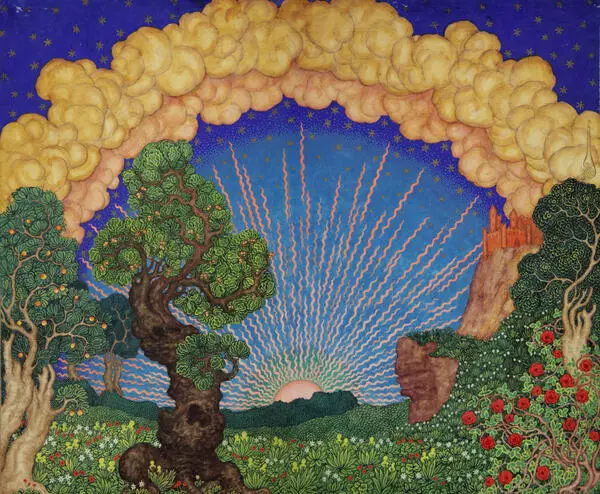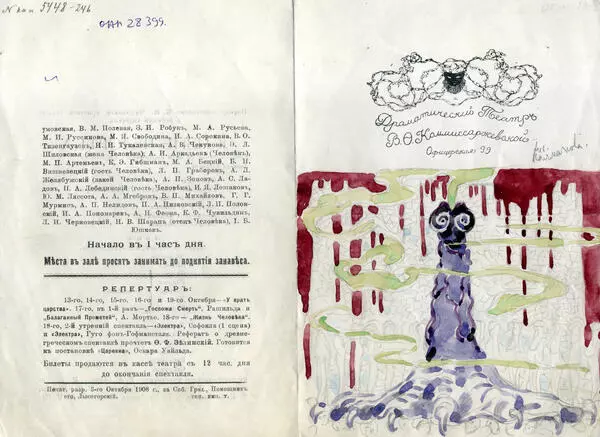Nikolai Konstantinovich Kalmakov was born in the picturesque Italian town of Nervi near Genoa. He spent his early years in Italy, his mother’s home country, and later moved to Saint Petersburg where he studied at the Imperial School of Jurisprudence up to 1895. Kalmakov never received complete academic training in painting. He taught himself by studying classic Italian paintings. Starting from the mid-1900s, Nikolai Kalmakov started actively participating in exhibitions with his symbolic paintings depicting stories from Eastern and classical myths.
For a few years, Kalmakov was a member of the Mir Iskusstva art movement, which had great scene painters in its midst such as Léon Bakst, Konstantin Korovin, and Alexander Golovin. Kalmakov’s style and skills were greatly influenced by the works of the illustrator Aubrey Beardsley.
For a few years, Kalmakov was a member of the Mir Iskusstva art movement, which had great scene painters in its midst such as Léon Bakst, Konstantin Korovin, and Alexander Golovin. Kalmakov’s style and skills were greatly influenced by the works of the illustrator Aubrey Beardsley.







